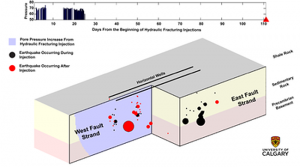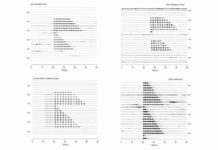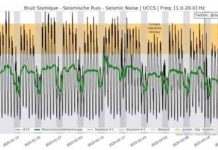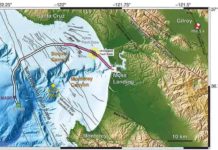
Credit: University of Calgary
In some parts of western Canada, small-to-moderate earthquakes have been induced by oil and gas hydraulic fracturing operations. In Alberta, this type of induced seismicity is mainly concentrated within an area located about 30 kilometres west of the town of Fox Creek.
Although a correlation between hydraulic fracturing and seismic events has been documented for over four years, a detailed mechanism has not been clearly understood — until now.
Indirect evidence has pointed to activation of pre-existing faults as the underlying physical mechanism, but precise delineation of these features has been elusive. Without this deeper understanding, formulation of strong mitigation and prevention strategies has been a challenge for regulators and operating companies alike.
Now, a new University of Calgary study, “Fault Activation by Hydraulic Fracturing in Western Canada,” is reported in Science, one of the world’s leading academic journals. In the most detailed study of this phenomenon to date, Faculty of Science researchers in the Department of Geoscience have successfully imaged some of the pre-existing fault architecture near hydraulic fracturing operations and discovered that activation can occur through two distinct processes.
“This study has provided extraordinary new details about processes of fault activation by pore pressure increase or stress changes. We can now begin to address important questions — the ‘how’ and ‘why’ of seismicity induced by hydraulic fracturing — that previously were not discernible,” says David Eaton, professor of geophysics and co-author of the study, with former postdoctoral scholar Xuewei Bao.
The research holds promise for establishing new ways to assess risk and mitigate the hazards of earthquakes induced by hydraulic fracturing, and to help in developing science-informed regulations for such operations.
‘Exquisitely detailed’ picture
Eaton and Bao collected and analyzed seismic data going back to the winter of 2015, when the first seismic event exceeding magnitude 4 on the Richter scale, occurred in the Fox Creek area. They compiled data from private and public seismograph stations in the area, monitors they installed after the earthquake, and also a comprehensive database of hydraulic fracturing data from each well in the area.
Using state-of-the-art techniques, Bao and Eaton created a database of 905 distinct events, most of which were too small to be part of existing seismicity catalogues. They were able to link seismic events to specific operations at individual wells, thanks to Repsol Oil and Gas Canada Inc. and Canadian Discovery Ltd., which provided data for the study. This university-industry partnership is crucial for researchers to gain access to data and to understand the fundamental processes.
“The combination of precise micro-earthquake locations and uniquely comprehensive data gave us an exquisitely detailed picture of the timing and dynamics of rupture nucleation,” Eaton says.
Bao, who did the “painstakingly detailed” data analysis, has since joined the faculty at Zhejiang University in China.
Two distinct seismic processes revealed
Their image of seismic activity reveals a pre-existing but previously undetected fault system running parallel to two horizontally drilled wells. In one strand of the fault, hydraulic fracturing in both wells triggered small earthquakes by imposing mechanical stresses on the rock formations beneath the hydrocarbons-bearing zone — causing the fault to slip.
In this case, movement on the fault effectively terminated when hydraulic fracturing operations ceased, consistent with existing regulatory protocols to halt operations under certain conditions, Eaton notes.
However, in another strand of the fault — and more than two weeks after hydraulic fracturing injections had stopped — the magnitude 3.9 earthquake occurred at a calculated depth of just over four kilometres. This places the event within the upper levels of Precambrian basement rocks. Subsequent smaller seismic events persisted for a few months afterward, as the seismic activity migrated slowly from the basement back up toward the injection zone.
The researchers’ findings indicate that this persistent activity appears to be associated with infiltration of fracturing fluids into one strand of the fault.
Distinction between stress-induced and fluid-induced seismicity
“We didn’t expect to observe contrasting signatures for stress-induced and fluid-induced seismicity,” Eaton says. “This distinction may have important ramifications for hazard mitigation, depending on which process is inducing seismic activity.”
Reference:
X. Bao et al. Fault activation by hydraulic fracturing in western Canada, Science (2016). DOI: 10.1126/science.aag2583
Note: The above post is reprinted from materials provided by University of Calgary.










